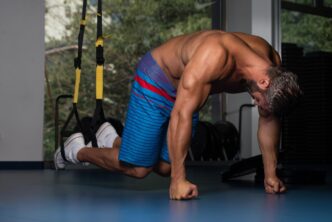A Quick Takeaway
The Story Behind the Trend
How to Make It Work for You
The Community View
A 6-day workout split is an intensive training regimen where individuals dedicate six days a week to structured exercise, typically focusing on different muscle groups each day, with one dedicated rest day. This advanced approach is primarily adopted by experienced lifters, bodybuilders, and fitness enthusiasts who aim to maximize muscle hypertrophy, strength gains, and overall conditioning. It allows for high training volume and frequency, making it an effective strategy for those committed to pushing their physical limits within a gym setting, provided adequate recovery and nutrition are maintained.
What is a 6-Day Workout Split?
A 6-day workout split involves dividing the body’s major muscle groups into different training days across the week. Instead of hitting full-body workouts multiple times, each session targets specific muscles or muscle groups, allowing for higher volume and intensity per group. Common examples include Push-Pull-Legs (PPL) performed twice a week, or an Upper/Lower body split combined with specific muscle group days.
This structure ensures that each muscle group receives direct attention at least twice a week, a frequency often cited as optimal for muscle growth according to scientific literature. The design allows for sufficient recovery of individual muscle groups between sessions, despite the overall high training frequency.
The Benefits of a 6-Day Split
For the right individual, a 6-day split offers several compelling advantages for achieving peak physical condition.
Increased Training Volume and Frequency
One of the primary benefits is the ability to accumulate significant training volume for each muscle group over the week. By spreading workouts across six days, you can dedicate more sets and repetitions to specific muscles without over-fatiguing your entire body in a single session.
This higher frequency means muscles are stimulated more often, which can accelerate adaptation and growth. For instance, a muscle group hit twice a week will receive more growth signals than one hit only once.
Enhanced Muscle Hypertrophy
The combination of increased volume and frequency makes the 6-day split highly effective for muscle hypertrophy, or muscle growth. Each workout can be intensely focused, leading to greater muscle damage and subsequent repair and growth.
This concentrated effort on individual muscle groups allows for a deeper connection and activation, promoting a more pronounced anabolic response.
Greater Focus on Individual Muscle Groups
With dedicated days for specific muscle groups, you can meticulously plan your exercises to target all heads and functions of a muscle. This precision can lead to more balanced development and address specific weaknesses.
For example, on a “leg day,” you can incorporate exercises for quads, hamstrings, glutes, and calves without feeling rushed or limited by overall fatigue.
Improved Workout Efficiency
While the overall time commitment is high, individual workout sessions tend to be shorter than full-body workouts. This efficiency can be beneficial for those with busy schedules who prefer shorter, more frequent gym visits.
By focusing on fewer muscle groups per session, you can maintain higher intensity throughout the workout without prolonged fatigue setting in.
The Drawbacks and Considerations
Despite its potential, a 6-day split is not without its challenges and is not suitable for everyone.
High Demands on Recovery
The most significant drawback is the intense demand it places on your body’s recovery systems. Training six days a week can quickly lead to overtraining if sleep, nutrition, and stress management are not meticulously optimized.
Insufficient recovery can manifest as persistent fatigue, decreased performance, increased injury risk, and even hormonal imbalances.
Significant Time Commitment
Committing to six gym sessions a week requires substantial dedication and time management. This schedule can be difficult to sustain for individuals with demanding jobs, family responsibilities, or other significant time commitments.
Missing workouts can disrupt the entire split’s intended frequency and volume, potentially hindering progress.
Increased Risk of Burnout and Injury
The relentless nature of a 6-day split can lead to both physical and mental burnout. The constant push can be taxing, making it harder to maintain motivation over the long term.
Furthermore, without proper form, progressive overload management, and adequate rest, the repetitive strain can significantly increase the risk of overuse injuries.
Not Suitable for Beginners
Beginners typically lack the foundational strength, muscle endurance, and recovery capacity required for such a demanding schedule. Starting with a 6-day split can quickly lead to frustration, injury, and burnout, deterring long-term fitness engagement.
It is generally recommended that beginners start with 2-4 full-body or upper/lower split workouts per week to build a solid base.
Who Should Consider a 6-Day Split?
A 6-day workout split is best suited for advanced lifters who have several years of consistent training experience, understand their body’s recovery needs, and have specific goals like competitive bodybuilding or significant strength plateaus. They must also have excellent nutrition and sleep habits.
Key Strategies for Success
If you decide a 6-day split is right for you, implementing these strategies is crucial for success and injury prevention.
Prioritize Sleep and Nutrition
Adequate sleep (7-9 hours) and a nutrient-dense diet rich in protein, complex carbohydrates, and healthy fats are non-negotiable for recovery and performance. These elements fuel muscle repair and growth.
Listen to Your Body
Pay close attention to signs of overtraining, such as persistent fatigue, decreased performance, joint pain, or irritability. Don’t be afraid to take an extra rest day or modify a workout if needed.
Incorporate Deload Weeks
Schedule regular deload weeks (every 6-12 weeks) where you significantly reduce volume or intensity. This allows your body and central nervous system to fully recover and prevent chronic fatigue.
Vary Your Exercises and Rep Ranges
While consistency is key, periodically rotating exercises and rep ranges can prevent plateaus and ensure comprehensive muscle development. This also reduces the risk of repetitive strain injuries.
The 6-day workout split is a powerful tool for unlocking peak fitness and achieving significant gains in muscle size and strength, particularly for experienced individuals. However, its demanding nature necessitates an unwavering commitment to recovery, nutrition, and intelligent programming. Weighing the substantial benefits against the significant drawbacks will help you determine if this intensive training methodology aligns with your current fitness level, lifestyle, and ultimate goals.








